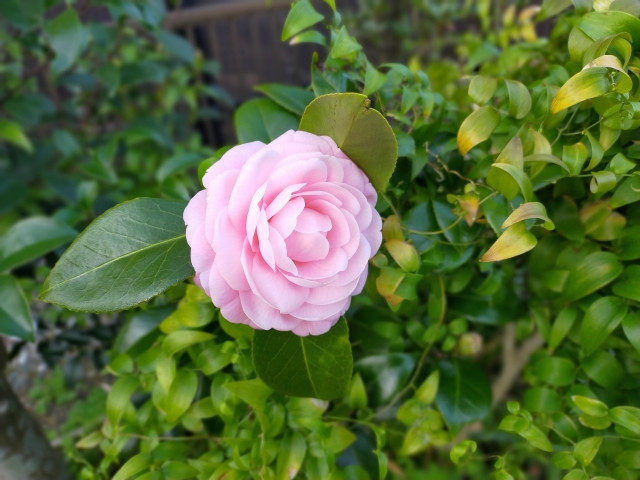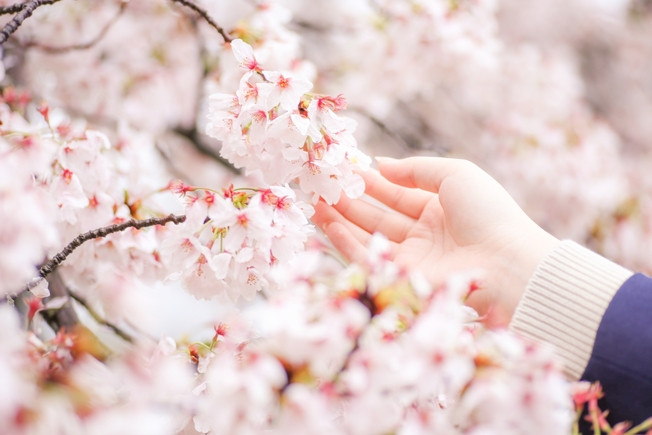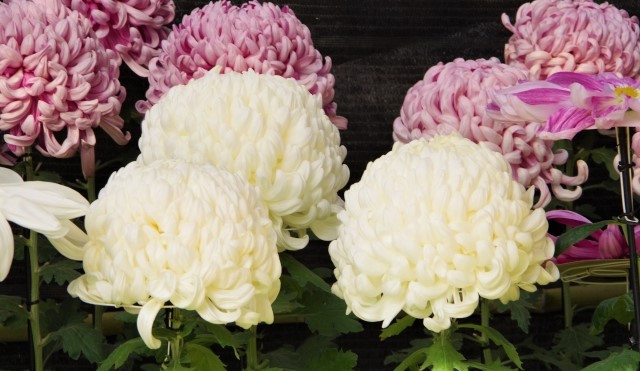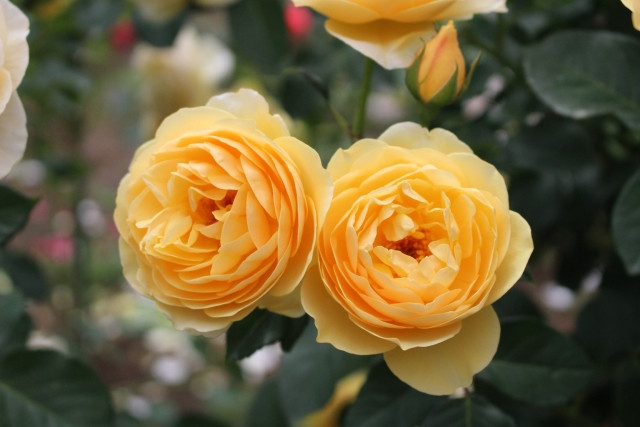Do you know the most popular and lovely flowers in Japan? The country is well-known for its cherry blossoms, the national flower, but there’s so many more! Japan has a lot of beautiful, unique flowers that are only available in this country that people should check out in each season.
Table of Contents
Popular & Unique Flowers in Japan
Flowers are deeply engraved in Japan’s culture as symbols of the nation itself or of the distinct seasons in the country.
Check out the list of just some popular flowers found in Japan and know when the best time is to get a glimpse of these unique and rare blooms.
Iris (May - June)

There are a large variety of species of irises in Japan, including Ayame, Hanashobu and Kakitsubata, that grow in various climates, some of them found by water such as rivers and lakes. These often purple flowers are found all over Japan - and are so popular that there’s festivals dedicated to them! - and June is a great time to see most of them in full bloom. Horikiri Iris Garden in Tokyo is a great option as there are many kinds of irises there. The Inner Garden at Meiji Jingu Shrine is also another great location to see irises beloved by the Meiji Emperor and Empress themselves! Even though the irises are beautiful to look at, please do not touch them without gloves. They are poisonous to ingest and can cause severe skin irritation just by touching them.
Paris Japonica (July)

Have you ever heard of Paris Japonica or kinugasasou in Japanese? It looks very interesting, with a white flower connected to a long stem, with large leaves under it like a base or a collar. It looks beautiful and can be found growing in groups on the mountainside. A famous place to see them is at Hakubajirigoya. But what’s astounding about this plant is that it has the largest genome of any organism ever discovered.
Camellia (December - March)

The Camellia japonica, known as tsubaki in Japanese, comes in the variations of deep red, light pink and white. An interesting superstition about the camellia is that if a samurai witnessed its wilting, which is the entire flower breaking off the stem, it was a sign of bad luck, as it resembled a person getting their head chopped off. Quite a morbid omen, no? Nowadays, camellia oil is really popular and used in a variety of hair and skin products, including the famous Tsubaki shampoo. Hounenin in Kyoto has a beautiful camellia display every year.
Sasanqua (Fall - Winter)

With its scientific name Camellia sasanqua and called sazanka in Japanese, this flower has almost the same appearance as that of the Camellia, but wilts by dropping petals instead of the entire flower. The sasanqua’s presence in Japan dates back during the Edo Period and they’ve often been used for oil and tea. Most sasanqua flowers range from white to a darker shade of pink. It is also very fragrant. You can experience it to the fullest in Sazanka Kougen in Nagasaki where you can find 3000 of them blooming at once around December.
Japanese Tiger Lily (July - August)

The Japanese tiger lily has a bold orange color with black spots throughout its petals. These types of flowers can grow up to two to five feet tall! When considering the size, the Japanese name for tiger lily - oni-yuri which translates to ogre lily - makes sense. If you want to catch a glimpse of the Japanese tiger lilies, Oniyuri Gunseichi in Hatta-machi, Ishikawa has 15,000 of them in one place that you can see from around the latter half of July.
Spider Lily (September - October)

Spider Lilies, or higanbana in Japanese, signal the arrival of fall. Although it appears as a flower full of life due to its often bright red petals, higanbana is linked to loss of life; thus it is commonly found in cemeteries and should never be gifted to anyone. If you wish to check out these flowers, you should visit Kinchakuda Manjushage Park from mid-September to October. You may have seen them in the ending credits for the popular anime Kimetsu no Yaiba (Demon Slayer).
Japanese hydrangea (June - July)

Hydrangea is a symbol of tsuyu, or rainy season in Japan as it blooms from early June to mid-July. They are found in a variety of pastel colors from pale pink to blue to purple. People will often travel to see them blooming in bunches, and they’re often found near temples and shrines. Some of the best spots to check out hydrangea include but are not limited to Mito, Kamakura, Tokyo and Hakone.
Writer's Pick
National Flowers of Japan
Aside from being beautiful and some being unique to Japan, every flower is said to have a meaning - called 花言葉 (hanakotoba) in Japanese - that many Japanese people value.
However, sometimes that meaning goes beyond the simple hanakotoba and instead represents a town, a prefecture or even the entire nation.
Cherry blossoms are perhaps the most popular flower in Japan and many may identify it as the national flower. However, there is also another flower, the chrysanthemums, which is a significant part of Japan's identity. Want to see them during your vacation? Then check out the information below to know when the best time is to visit.
Cherry Blossoms・Sakura (late March - mid April)

Known as sakura in Japan, these flowers are a feast for the eyes and will surely capture your heart. If you’ve looked up photos of Japan, I’m sure you’ve seen the beautiful pink canopy of flowers. If you want to see them for yourself, you have to be quick because it only lasts about a week or two in each region. The best time is around late March to early April, with adjustments needed to be made for each area you plan to visit.
One of the best and most famous places to experience a canopy of sakura in full-bloom is in Yoshino, located east of Osaka in Nara. Here, thousands of blushing cherry blossoms are looking forward to your visit.
For cherry blossoms in Tokyo, check out our article about it:
Tokyo Cherry Blossom Season: The most popular spots to see sakura in Tokyo
Chrysanthemums ・Kiku (November)

The chrysanthemum or “kiku” in Japanese is the officially recognized national flower of Japan. The image of the chrysanthemum has been used in official seals by the Imperial Family for centuries; thus it holds a very significant value in Japanese culture. Not only that, chrysanthemums signify longevity which is why it is used in flower arrangements for celebrations.

Chrysanthemums have different colors and varieties and some of these are showcased during the Kiku Matsuri held every November at Yushima Tenmangu Shrine. Aside from over 2,000 chrysanthemums, dolls wearing clothes made of chrysanthemums are also on display.
Japanese Gardens in Tokyo

Thanks to Japan’s four seasons, locals and tourists can indulge themselves in visually-pleasing varieties of flowers that change every season. These flowers can be found in different regions of Japan, particularly in beautiful and aesthetically maintained gardens. Here, we will introduce to you some of the best gardens you can check out in the nation’s capital.
Jindai Botanical Gardens
Recognized as the home of the biggest rose garden in Tokyo, Jindai Botanical Garden has a huge variety of flowers such as wisteria, ume plum trees, and peonies and many many more in addition to the thousands of roses. You can find this garden in Chofu City and admission costs 500 yen for adults.
Shinjuku Gyoen National Garden
Located in Shinjuku, this garden is a wonderful escape from the citylife, yet it’s found smack in the middle of one of Tokyo’s busiest neighborhoods! Shinjuku Gyoen National Garden is divided into three distinct gardens– Japanese traditional, French formal, and English landscape - with many beautiful flowers to enjoy every season. It also has plenty of space for people to stroll and relax year-round. Admission fee is 500 yen for adults.
Mukojima Hyakkaen Gardens
Found in Higashi-Mukojima in Sumida Ward, this garden is considered a famous site of historical significance as the “only surviving flower garden from the Edo Period”. The wide variety of botanical attractions to enjoy include over 200 species of plants including sweet-smelling wisteria trellis, their famous Hagi clover Tunnel, irises blooming near the pond, and many others. And it only costs 150 yen to enter!
※Tokyo Metropolitan Park Association, Mukojima-Hyakkaen Gardens
In Conclusion

Whether you are going to Japan for work or to relax and unwind, devoting some time to check out these flowers should be included in your “to do” list. It is and always will be a worthwhile sight to see—a sight that will take your breath away, leaving you in astonishment and will surely urge you to come back again.










.jpg)
.jpg)








.jpg)













